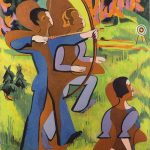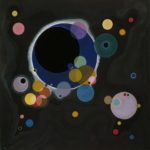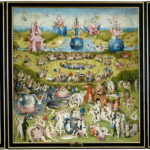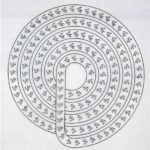Motivation, Emotion, and Virtue
In this section, the focus is on what motivates us, beginning from our basic biological proclivity of being moving creatures to the setting of the highest and most abstract goals. What is the cause of our action and what do we aim towards? We begin this journey from the evolutionary explanation of instinct and fixed action patterns and layer on the mechanism of learning from experience. Then we will look into what our greatest aims are and what it takes to arrange those goals into the meaningful life that we all yearn for, acting with optimal experience and purpose.
The Origins of Emotion
Most of the time we want to jump into the topic of emotion without giving a context. This may be because we know what emotion is, at least the experience of emotion is so regular that we fail to give it a good definition. But emotions are complex structures and events that are built upon an already existing motivational system. When we tract the genealogy of emotions we start with the instincts and fixed action patterns that we inherit as a species. These interact with our experience, whether or not they endorse our instincts or silence them. Emotions are made in a constantly growing complexity of acting and results. Eventually, emotions become the events that encounter unknown territory that needs to be adapted to.
Behavior: Learning and Habit
The understanding of the major components and mechanisms of behavior is first necessary to understand the complexity of emotional life. How do we adapt to the environment from our genetic blueprints? The mechanisms of learning are complex and need a great deal of discussion.
Instinct & Development of Drive
When we consider ourselves as biological and moving creatures we have to look back at our evolution and how it influences behavior patterns. For biology is the substrate of action, but not its only cause. We can then see the starting point of all human action, and no matter how different or perverse, we can be recognized actions as something with biological origin.
Behaviorism & Feedback
As we act with reflexes and instincts, we begin to observe the consequences of our actions and whether or not we continue doing them or in what contexts they are appropriate. Research in operant conditioning teaches us so much about the mechanisms in which our innate instinct derived from our evolutionarily constant environment interacts with our present and experienced environment.
Habituation & the Known
As we learn, we learn what to ignore or what we can handle without conscious effort or attention. We delegate motor actions and perceptions to the “known” world of habits. Habits are both the cause of many of our problems and the grace that we rely on in quick situations.
Emotional Structures and Cause
When it comes to emotion and motivation, the structure of its elements is important. Our needs and drives are complex and form hierarchies according to rules and experience. Our goals also change according to the passing of the present situation. Understanding the complex structures and interactions of needs and situations allows us to grasp the logic of emotions and actions.
Need & Motivational Structures
Our actions have a presumed motive behind them, whether we know it or not. They are often efforts to reduce a discrepancy between the current situation and a more ideal one. Our motives are complex but can be categorized hierarchically and in nested ways. Understanding this will give us insight into our self-contradictions and the apparent irrationality of our goals and actions.
Situation Detection & Appraisal
Not only are our goals multifarious and nested, but so are the situations we find ourselves in that signal the activation of such goals. Situations are also nested within each other, for we are both in a narrow situation and a broad sociocultural one.
Action Structures and embodiment
What is action and when does it become emotion? This section combines what we know about operant conditioning and habituation to come to a conception of our tendency to act, through the main mechanisms that we have (affect programs) to the occurrence of the adaptational encounter we call emotion.
Concept of Intention
To understand emotion, we must understand the conception of action that is prior to emotion. What does it mean to have the impulse to act? In this way we can then have an idea of our options when we encounter an emotional situation.
Affect Programs
Affect programs are neural circuits that respond to broad categories of motivation. They are innate proto-emotions that can teach us about why we act the ways we do and what are the core features of our motivations.
Emotion Proper
Emotion comes not when we experience goal, a situation, and respond with an action, but when consciousness is given to that combination in an effort to adapt to a novel situation. Emotion is a primary mode of learning and it provides for us the possibility for expansion of the mind.
Goals and Self-Regulation
Now we broaden our view to the emotional complexity of the uniquely human ability to commit to long-term goals. Our unique ability to set and strive for long-term goals grants us the unique proclivity to sacrifice the present for a future reward. First, we look at what are the ways goals arranged to be the most motivating, how we plan to strive for them, and how we react to feedback as we implement our plan. But what happens when other goals interfere with the goal we are currently committed to? We have defenses and strategies to keep us on track to our original commitment. This is called self-regulation.
Volition & Goal Seeking
The steps to successfully setting and striving for goals is
well-studied and full of practical advice. Here, we discuss three stages of
goal seeking. First, we must set the goal properly and conceptualize it in a
way that is clear and desirable. Second, we must create a specific plan that
can get us to the goal that we defined. Third, we must take those first steps,
and observe the feedback that we get which informs us how to revise our goal.
Goal Conceptualizing & Goal Setting
Creating goals is not as easy as it sounds. Even if what you want is clear, imagining the concrete manifestations of success may be difficult. Further, the attributes of the goal are important to make desirable, considering the consequences, good or bad, of success.
Deliberation & Planning
Planning for a goal does not necessarily come naturally. We must be both motivated to plan, but not overly motivated to where we just start implementing a half-drawn plan. With a good, realistic and specific plan, accomplishing a goal is even more doable and more exciting.
Implementation & Volition
Perhaps more importantly than either the conceptualizing or the planning is actually taking action. When you act on the objectives that you have conceptualized you are acting with volition and you gain a sense of autonomy that way. Procrastination is the worst habit a person with goals can have.
Self and Narrowing Vision
The self, broadly defined is the commitments that we have made, sacrificing present pleasure for future gain. We do this whenever we work towards long-term goals. When we encounter conflicting goals or pleasures that threaten our goals, we enact strategies of self-regulation that allows us to continue striving, single-mindedly toward the goal we have set or has been set upon us.
Motivational Dynamic of Self
By understanding the self as a team of goal-commitments that helps us ignore other goals and pleasures, we can better understand how we become self-conscious and pay attention to our actions to see if they align with the actions required to reach a goal. Finally, we will see how self-regulation stops, whether it be in failure or success.
Self-Regulation Strategies
There are five general strategies that we use to regulate ourselves to reach a goal we’ve committed to. These are situation selection, situation modification, attentional deployment, cognitive change, and response modulation. These strategies can be used in either positive or negative ways, depending on the context and manner of their use.
Eudaimonia & Virtue
The successful pursuit of a goal does not guarantee happiness, in fact, the narrow pursuit of an end can bring about a hell. We require the fulfillment of many instincts as well as the continuous, meaningful pursuit of improvement and expansion. There is no such thing as a permanently satisfying state, and for that we must see how our lived experience and larger goals interact to create a good life.
Wholesomeness & Health
In the end, it is not just your success on a particular goal, or on many goals that make you live a good life. Unfortunately, it is not at all as simple as that. The consequence of self-regulation is often the fragmentation of the many chaotic instincts which you’ve had to suppress or over-emphasize in the single-minded pursuit of a goal. Here, we will look into how we can practice a wholesome and virtuous life.
Psychodynamics & Unconscious
We are complex, biological animals. We have an “id” which contains an amalgam of drives and interests that create the whole of a human being. When we fragment ourselves by narrowing our drive to a single goal, we close off parts of our self, sometimes from consciousness itself. The ego is what allows that to stay manageable to a limited degree, but sometimes that can result in pathology.
Myth & Metaphor of Health
The consequences of our fragmentation and release of pressurized psychic energy is what we might call a symptom. We use our own language and culture to diagnose and define simply what a very complex occurrence might be. Sometimes the articulation of these problems comes to us in myths and archetypes.
Practice & Cure
When we attempt to cure the problem, as in modern medicine, we often treat the symptom. Instead, we must understand what level of complexity the problem lies, and attempt to solve the problem there.
Virtue & Fulfillment
Health is clearly very important to our emotional lives, but like physical health, emotional health requires the interaction with the world despite it referring to an internal state. Our emotions depend on actual actions and behaviors and reaching the ends that we set for ourselves. Our morality requires the intuition of emotions and a pursuit of their ends.
Virtue & Emotion
If we are to direct our lives wholesomely, we must be able to derive our morality and choices of goals from some kinds of intuition. We also cannot trick ourselves into thinking that we want to just feel these emotions, we also must exercise them in the world. We require interaction with the environment since that is what emotion requires.
Heaven
We need a way to order our goals, one that can give us hope and life satisfaction. Our aim should be to align those conflicting desires and integrate them so that they work together. This ideal system of goals may be the idea often represented as Heaven—the end we seek when we follow the proper path.
THe Process of Meaning
Unfortunately, heaven is where a good soul goes after the body is dead and can no longer want. While we are alive, contentment is temporary, we must continue striving and often suffering. This realization can hit in very uncomfortable ways like trauma, failure, and suffering. But in response to this we must strive after an even more adaptive understanding of how we should live our lives.
Happiness Is a Continuous Emotional Process
A stable goal, no matter how attractive, is a judge, a tyrant that restricts the rules of your life to only aim at that one thing and if you faulter or fail, you reject that goal in extreme vehemence. Stable satisfaction is a myth and many people have responded to the collapse of that myth in harmful ways.
The Flow of Life
Without resorting to hedonism or a meaningless life, we can aim at something better: flow. Flow is the optimal experience between order and chaos. This experience can be elicited reliably by certain situations and activities. Our goal here is to integrate our grand heavenly goals with optimal experience, growth, and individuation.











